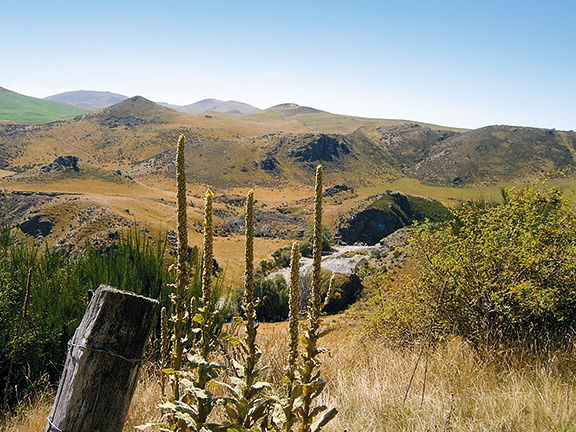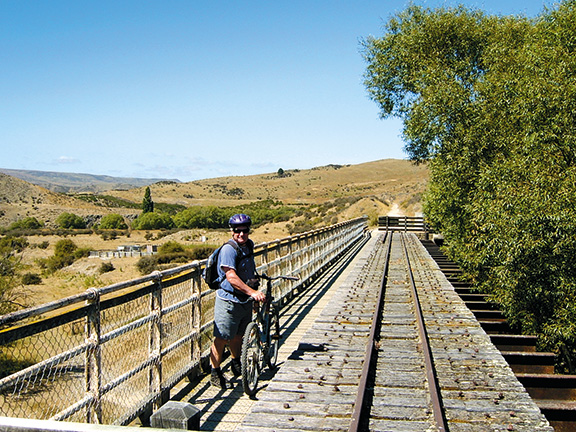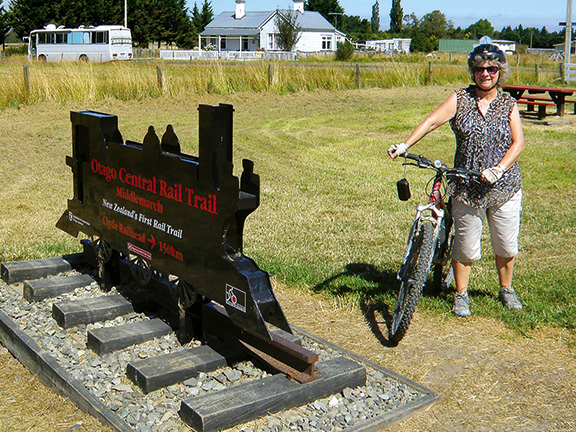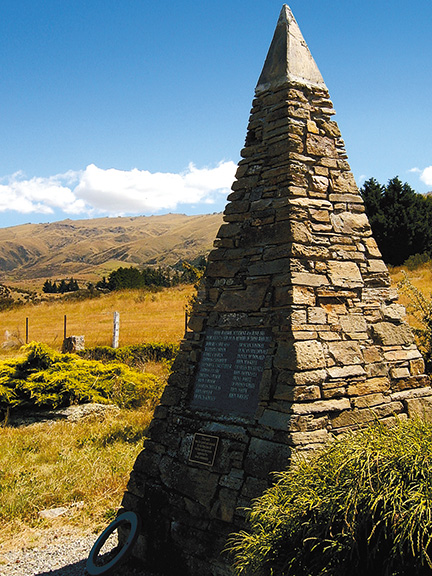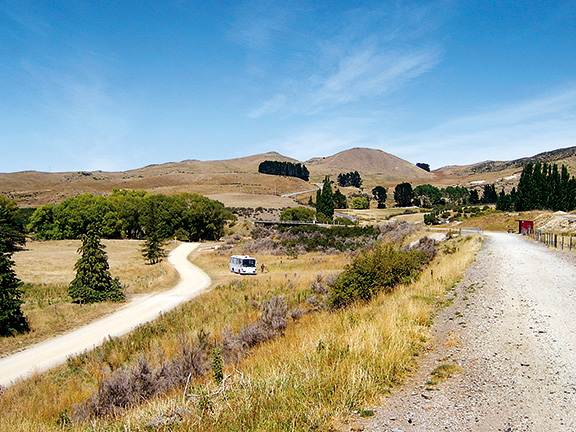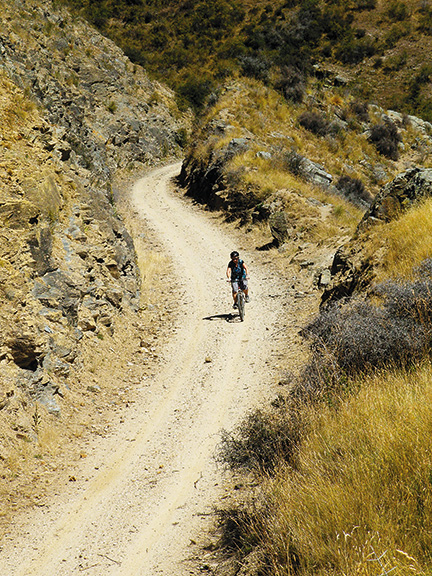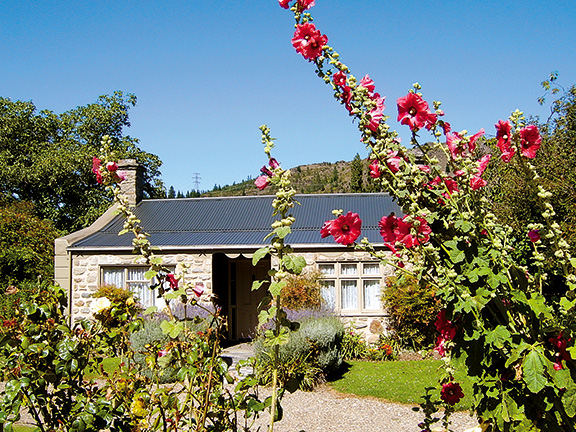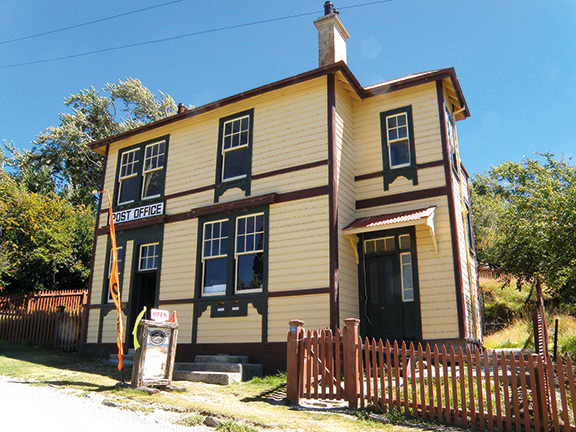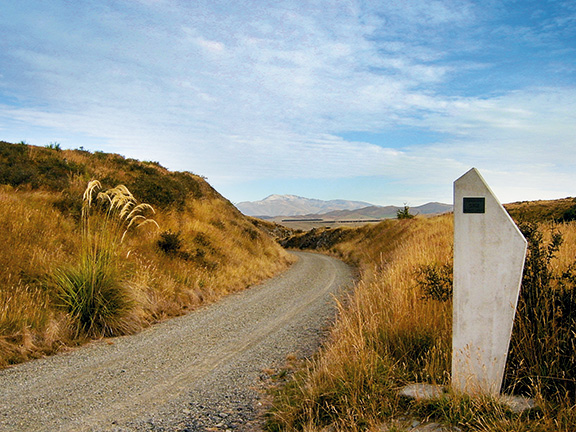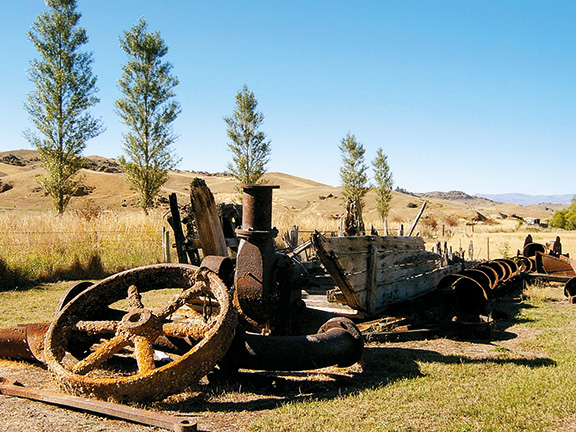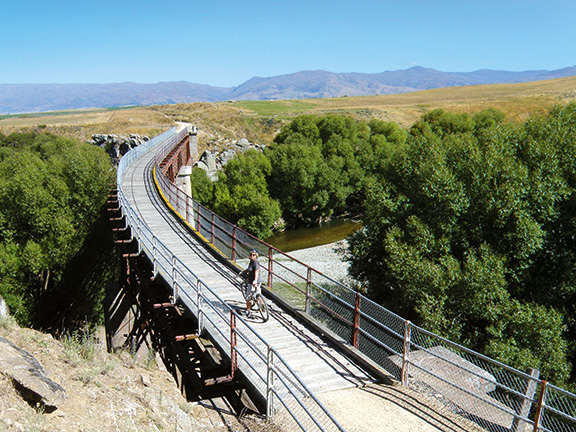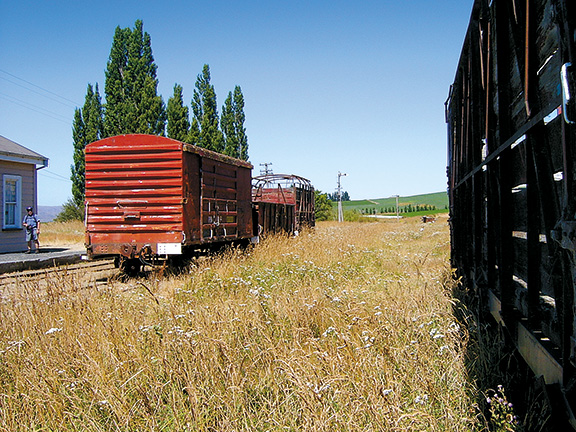Cycling the Otago Central Rail Trail is an amazing experience and one we found easy to achieve using our bus and car, mostly freedom camping along the route. The 150km-long trail usually takes around four days to complete, with about four hours riding each day at quite a slow pace with lots of stops.
These stops are not so much for resting but for taking photographs, reading the information panels, having picnics, and exploring the little settlements adjacent to the track.
Because we wanted the best Otago Rail Trail experience, we sat out a grey day or two, which is easy to do when you don't have a tight schedule and you have your home with you! Each day we drove to the trail in our car and cycled back to the bus. Then we moved the bus to where we had left the car.
It sounds complicated but it wasn't. Also (a confession) we cycled the trail sections in a downhill direction each day, as far as possible!
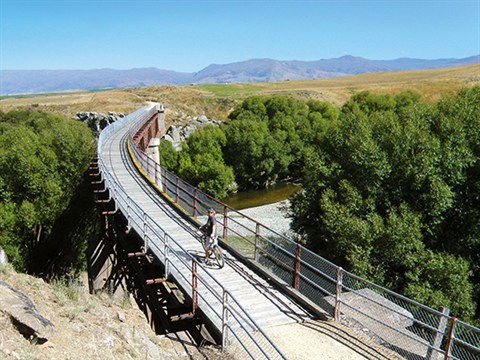
Otago Rail Trail camping spots and attractions
Our first freedom camping spot was outside Alexandra, tucked under the willows by a river. Alexandra began as a tent town in 1862 but survived miners moving on to the West Coast and took on a new lease of life as a fruit-growing centre.
There are many old buildings dating back to Alexandra’s early days, including an old courthouse built in 1879 that was in use for almost 100 years. Now it's owned by DOC and is home to a popular café — a great place to stop while cycling from Clyde.
The Rail Trail starts (or finishes) at Clyde which, like Alexandra, is an old gold mining settlement. The historic centre is well worth a stroll around, as its many old buildings are clustered together. A brochure, available at local information centres, details the history of the buildings.
Our second freedom camping spot was at Omakau, another old gold mining settlement beside the river. The railway's arrival in 1904 brought prosperity to the area and now the rail trail continues to do so.
A couple of kilometres from Omakau is picturesque Ophir. Originally known as Blacks, it was optimistically renamed Ophir after the Biblical gold mine where the Queen of Sheba obtained gold for King Solomon. When the railway bypassed Ophir, the town sank into obscurity for a period, which helped save its historic buildings. The much-photographed Ophir Post Office is open for three hours a day and visitors can get their mail stamped with the unique date stamp.
Haye's Engineering Works historic attraction in the Ida Valley was our next parking spot. NZMCA members pay a small charge to park overnight, which includes entrance to the homestead and associated buildings.
The homestead was built after WW1 and has many innovations from the era, such as its own electricity supply, a bathroom complete with a shower, and a system to pipe music into each room.
A café and gift shop is housed in the family's original home. Expect to lose the mechanically-minded for hours in the sheds and workshops as they admire the tools, hardware, and agricultural equipment which have made Hayes Engineering world famous in New Zealand!
St Bathans is on a loop road north of here. Another booming gold town in the 1800s, it is now a quiet backwater. Once it had 15 hotels; now only the reputedly haunted Vulcan Hotel remains, making St Bathans, quite literally, a ghost-town.
Beside the trail north of Hyde was our final overnight spot, where we were surrounded by mobs of sheep on a couple of occasions! Ranfurly is to the north, a good centre for amenities, and known for its Art Deco heritage.
From here it's a 10-minute drive to New Zealand's curling capital, Naseby. Here are more well-preserved old buildings but the gold mining scars are well hidden in the 'Black Forest', fir and pine plantations which are home to mountain biking and walking tracks and swimming holes.
Finally, we parked during the day at the trail's end, Middlemarch, to complete our last section of rail trail. As far as possible, we cycled in the mornings to avoid the heat. This gave us the afternoons to relax and explore the nearby towns by car.
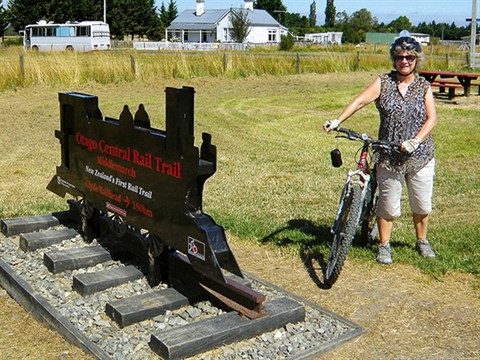
Otago Rail Trail: what, where, how?
We rode the trail in February, after the school holiday season was over, and found that we mostly had it to ourselves for hours at a time. Cycling the Otago Central Rail Trail is a great way to really experience the iconic dry landscape of 'Central' — a very special part of the South Island.
There are camping grounds at Clyde, Ranfurly, Naseby, and Middlemarch, and there are several freedom camping places along the trail route.
For more information about the Otago Central Rail Trail, drop by the i-SITEs in Cromwell, Alexandra, and Ranfurly. Visit otagocentralrailtrail.co.nz for more information.
For the latest reviews, subscribe to Motorhomes, Caravans & Destinations magazine here.

